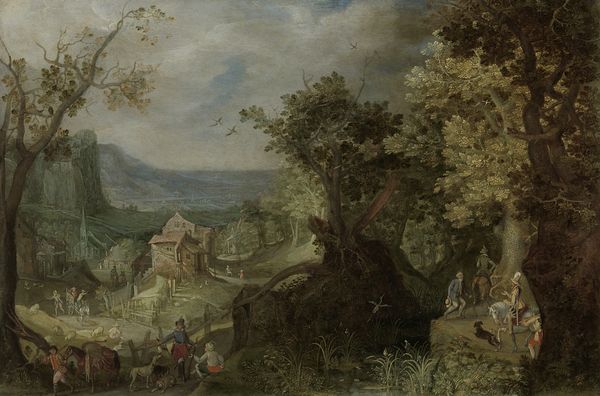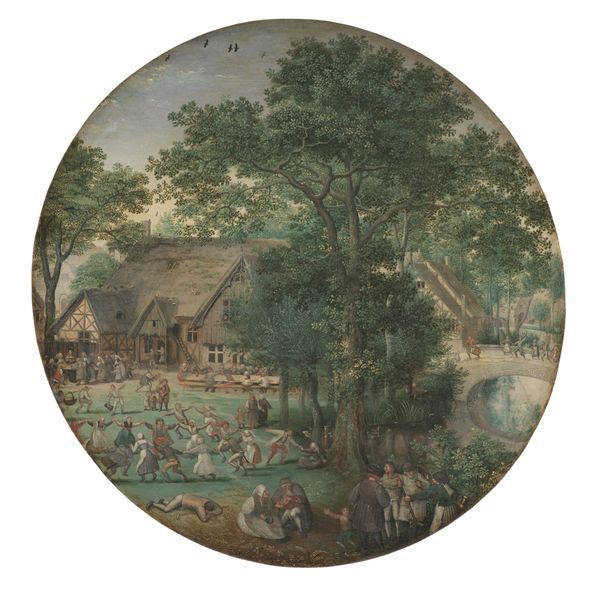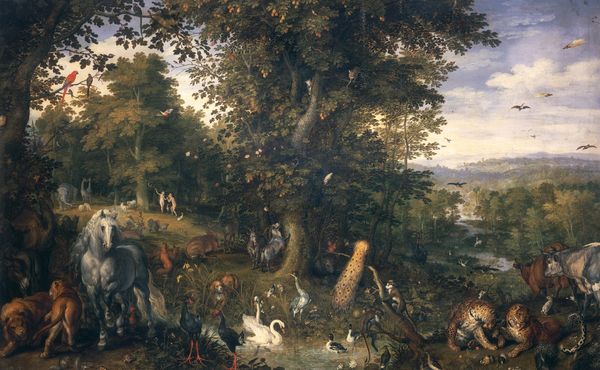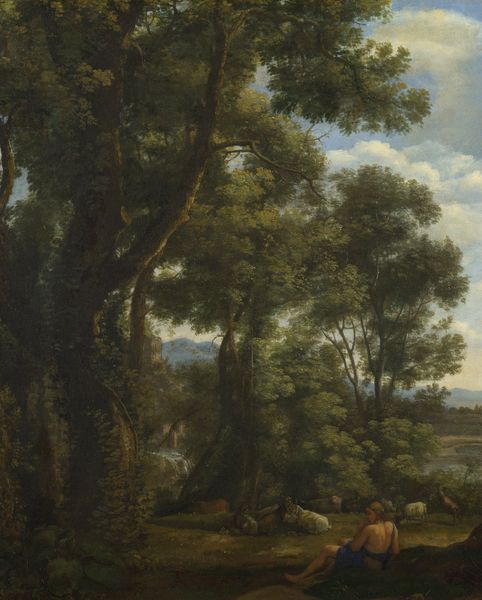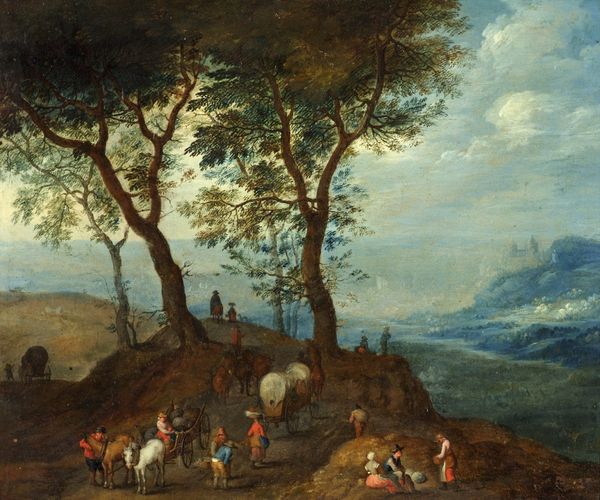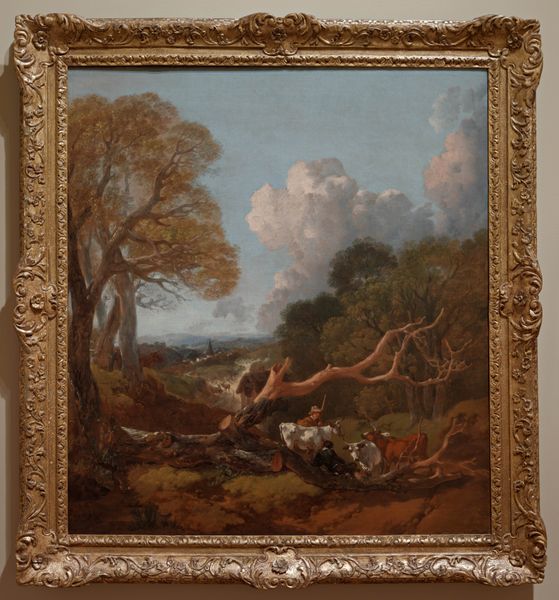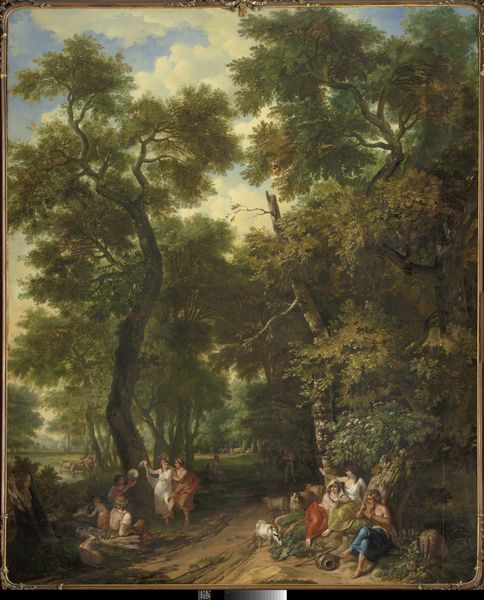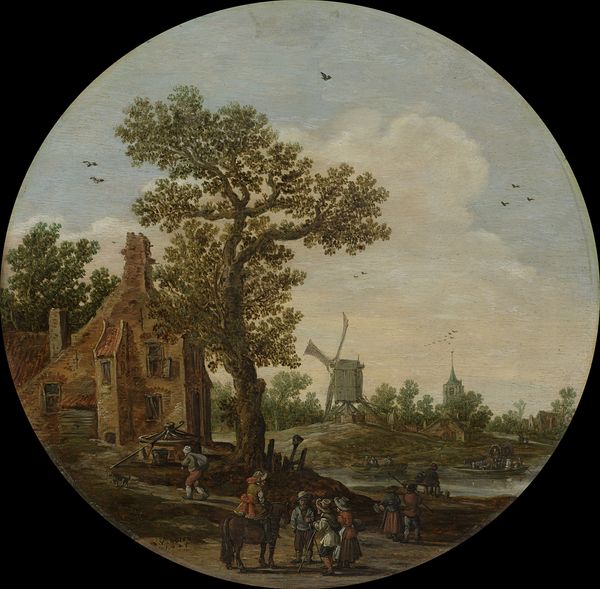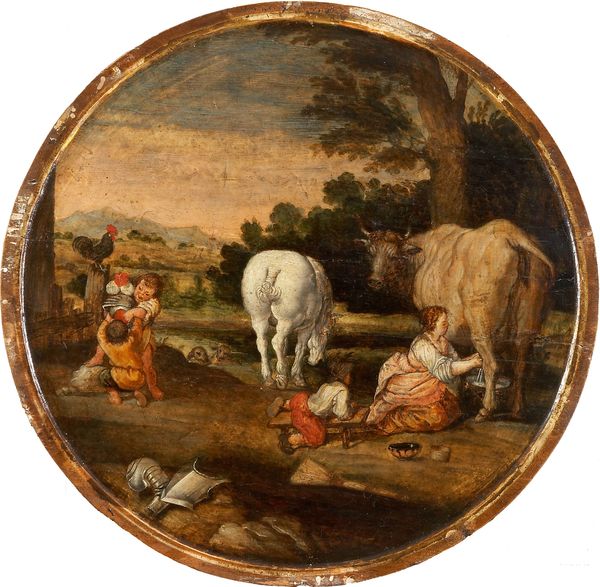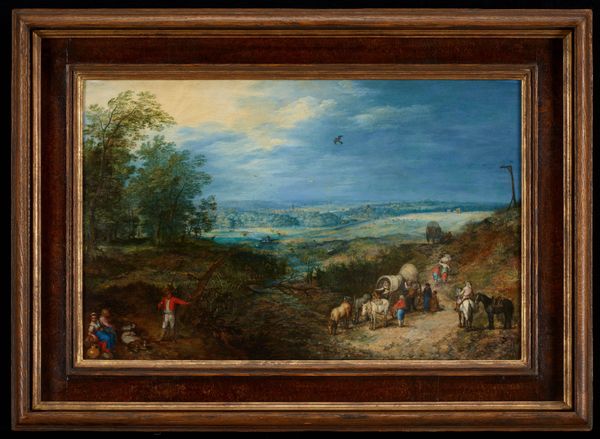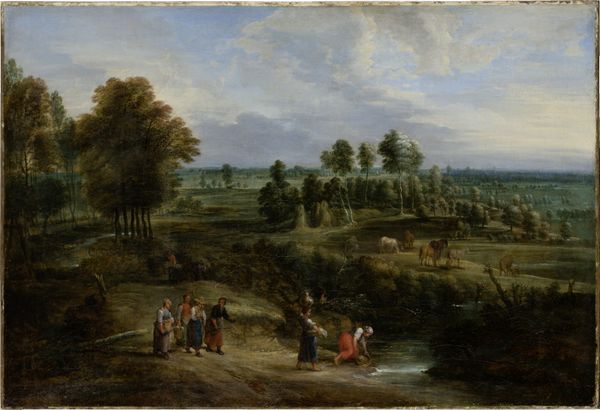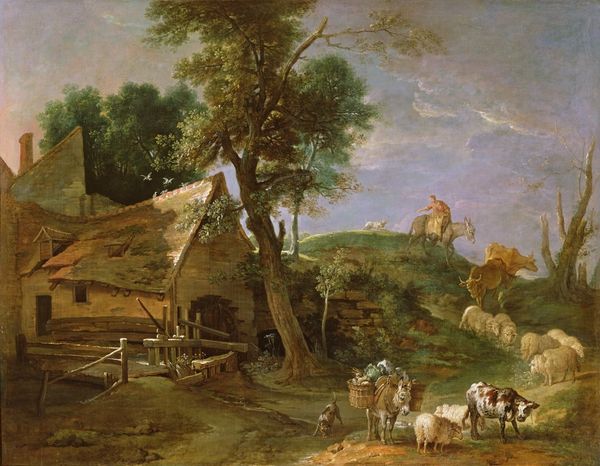
painting, oil-paint, wood
#
painting
#
oil-paint
#
landscape
#
mannerism
#
oil painting
#
flemish
#
wood
#
genre-painting
Dimensions: 29.5 cm (height) x 30 cm (width) (Netto)
Curator: Let's turn our attention to "Peasants Making Merry (Kermis)", an oil painting on wood created around 1574 by the Flemish artist Lucas van Valckenborch, now hanging in the Statens Museum for Kunst. Editor: It strikes me as surprisingly joyful for the period! It has an almost dizzying array of figures; you can almost hear the music and laughter emanating from this little oval frame. Curator: Precisely. Valckenborch's portrayal isn't simply documentation. It is engaging with power dynamics embedded within festive traditions, subtly exploring the temporary inversions of hierarchy and social order allowed during such events. The painting almost invites us to reflect on questions such as who profits from, and indeed controls the labour associated with this temporary release of revelry? Editor: Indeed. What’s also fascinating is the way he handled the oil paint to portray the materiality of work and festivity: the rough-hewn timbers of the buildings, the woven baskets, the dense fabric of clothing, all of it speaks to the labor inherent in their construction. I'm drawn to the very substance of paint here and what the painter has sought to record through such painstaking attention to those many crafted textures and material properties. Curator: I see it also in the composition; notice how he doesn’t romanticize peasant life; it's carefully balanced: there’s gaiety in the foreground figures dancing, but in the middle ground we see the buildings, suggestive of work, and the town behind represents trade, so these various labors are juxtaposed; one feeds into the other and back again. I see a dialectic occurring across this canvas. Editor: The small format underscores this duality. Oil on wood lends a certain richness, while the circular form might invite questions of "art" versus "craft". After all, we’re invited into this world to assess not just the subjects’ labors but the labor involved in crafting an artwork that contains and distills them, offering a unique perspective into our history of material practice. Curator: In reflecting on this, one thing is evident: artworks can operate as potent catalysts for critical introspection, encouraging a reimagining of societal narratives across lines of identity and historical materialism. Editor: I concur. Close examination reveals hidden narratives about process and labor that challenge our preconceptions about both art and society, then and now.
Comments
No comments
Be the first to comment and join the conversation on the ultimate creative platform.
